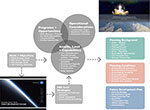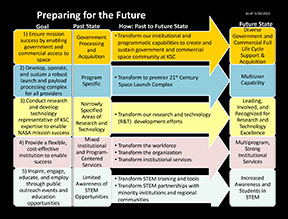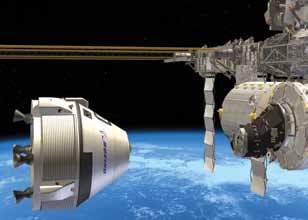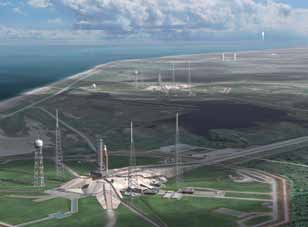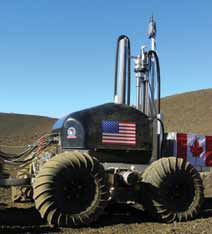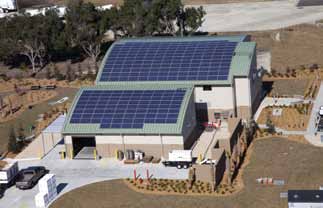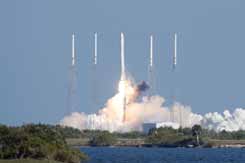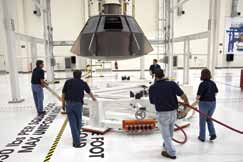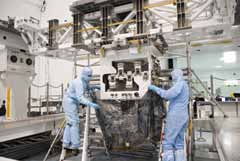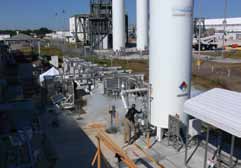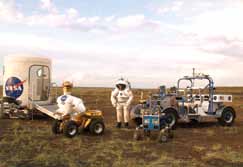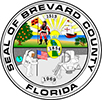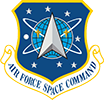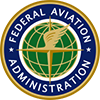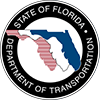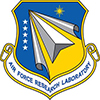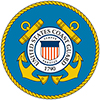
Overview
- Purpose + Need
- Context
- Planning Process
- Planning Horizon
- Plan Updates
Purpose + Need
The KSC Master Plan is a NASA-driven mechanism to define and communicate the Center’s concept for orderly future development and management of the Center’s real property assets.
- The previous 2008 Master Plan was based on the Constellation Program, which no longer serves as a valid baseline after cancellation of the Program.
- As NASA is currently in a programmatic transitional phase between Shuttle and Space Launch System (SLS), this Master Plan aims to provide the necessary framework and steps to achieve a sustainable end state, supporting both NASA and commercial launch operations.
- The KSC Master Plan is guided by a Master Planning Steering Group and prepared in accordance with Master Planning for Real Property (NPD 8810.2).
- Earlier planning efforts are a foundation that are built upon for this Plan, which describes how KSC will transform over the next 20 years to become a multi-user spaceport supporting government, commercial and other space launch users and providers.
- The Plan documents developmental possibilities for KSC’s future state, along with the supporting business focused implementation and operating framework necessary to enable this transformation.
Context
The previous KSC Master Plan prepared in 2002 had portions updated in 2008 and 2010. Current KSC planning documentation based on the 2002 and subsequent updates is in need of further updating to respond to rapidly changing political, financial and economic conditions and influences.
- Positioning KSC to be able to respond to the challenges of transitioning to a multi-user spaceport is a primary driver of this Plan.
- In response to these challenges, KSC began initiating efforts in the fall of 2010 by developing a tactical strategy to address the change in its mission, infrastructure and customer base.
- During 2011, KSC internally developed the Future Development Concept (FDC), which established the underlying strategy, vision and framework for the development of the KSC Master Plan.
- KSC and NASA HQ approved the FDC in February 2012, which also serves as the key planning guidance for this Plan.
- While developing this Plan, KSC has increased its planning interaction and collaboration with the Florida Department of Transportation as the State has prepared its Strategic Intermodal System plan.
Planning Process
A comprehensive planning approach and process outlines how KSC will transform over the next 20 years to become the premier multi-user spaceport.
- The KSC Master Plan comprises multiple components, including narrative and graphical documentation, mapping and a web-enabled presence. These mediums together describe a future KSC, including overall vision, planning framework, future development program and implementation plan and strategy.
- KSC resources will be repositioned and realigned to accommodate continued NASA operations, balanced with the integration of the emerging commercial space market activity optimized at KSC.
- The master planning process integrates the exploration of a range of development framework alternatives and corresponding operating models to respond to continuing NASA programmatic needs, as well as commercial space market opportunities, to ultimately leverage a highest and best continuing and future use of KSC land and facility resources.
- To accomplish the above, a series of interrelated planning stages and associated tasks support the development of the KSC Master Plan, which supports the achievement of KSC’s ultimate vision and planning objectives.
- An understanding of development suitability and carrying capacity considers environmental factors and global climate change.
- Continuing NASA needs are accommodated via a Development Program.
- An economically sustainable state is supported by an asset plan and infrastructure divestiture strategy and enabled by the implementation plan and strategy.
Planning Horizon
The KSC Master Plan addresses an overall 20-year planning horizon extending from 2012-2032.
- The 20-year planning horizon is further segmented into near-term (2012-2017), medium-term (2018-2022) and long-term (2023-2032) increments.
- The planning strategy for KSC includes initiatives and actions correlated to these planning horizon increments.
- Initiatives and actions are also correlated to the series of transformation stages that will support the evolution of KSC into a multi-user spaceport.
- Operational parameters, operational considerations, future projects and the reinforcement of a business environment to enable the transformation, is outlined in the Implementation component of the Future Development Plan.
- While this transformation is not necessarily time line dependent, and will be based on increased users and operators in line with space market demand, correlation of planning horizons and transformation stages are indicated to provide a context and framework to implement initiatives and actions, as well as fully leverage KSC's space market opportunities.

Plan Updates
Dynamic program and economic conditions necessitate a flexible, yet responsive planning framework. To this end, NASA requires that Center Master Plans (CMPs) be continually reassessed to keep them relevant and functional and to insure that they are achieving the goals originally established at the outset of the planning process. An update may be requested by either KSC or Headquarters based on a collective determination of whether the current plan may be out of date. Changes in mission or other conditions may also support potential re-examination of the goals to be achieved by the CMP. While the Capital Improvement Program Plan (CIPP) is usually updated annually, the updating of other plan components is dependent on a number of variables and factors that could form the basis for a reexamination of the CMP including:
- Change in Agency Facilities Strategy.
- Significant change in mission assignments.
- Advances in technology that change facilities requirements.
- Significant changes in the surrounding community.
- Significant variation in funding levels from Agency planning guidance.
Notwithstanding any of the above occurring, an update to the CMP is recommended every five years, subject to the Center Directors review and determination of the need for an update.
